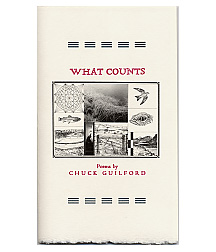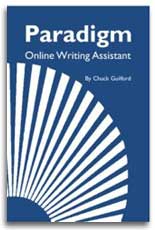The following examples illustrate some common Works Cited entries. To use them, find the entry that matches your source, then select that entry with your mouse and copy it to the appropriate place in your own Works Cited. Next, substitute the relevant information in your own source for that in the template entry, being careful to leave the punctuation, capitalization, and spacing unchanged.
And again, when in doubt, try the Landmark Citation Machine.
1. A book with a single author:
Fromm, Erich. The Art of Loving. New York: Harper & Row, 1956. 2. An edition other than the first:
Williams, Joseph. Style: Ten Lessons in Clarity & Grace. 2nd ed. Glenview, IL: Scott Foresman, 1985.
3. A selection in an anthology:
Lewis, C. S. "Satan." Milton: Modern Essays in Criticism. Ed. Arthur E. Barker. Oxford: Oxford University Press, 1965. 196-204.
4. A WWW page (Note: The first date is the page date, if given. The second is the access date):
"Log Cabin Literary Center." 19 Mar. 2004. < http://www.logcablit.org> (21 Apr. 2005).
5. A newspaper article:
"When Good Dogs Go Bad." Plainview Herald 1 Aug. 2007: 1B.
6. An article in a magazine:
Hackett, George. "The Longest Jump." Newsweek 15 Aug. 1983: 48.
7. An article in a journal paginated by volume:
Harris, James R. "Rhetoric of Science." College English 53 (1991): 282-307.
8. An article in a journal paginated by issue:
Matthews, William. "Miss Bishop." The Gettysburg Review 5:1 (1992): 71-72.
9. A personal interview:
Nutley, Delbert. Personal Interview. 1 Apr. 2005.
10. An article in a dictionary or encyclopedia:
"Goblin." The Oxford English Dictionary. 1971 ed.
Activities
9.1 Read the following three passages and the publication information for each one. Imagine that you are using the passages as sources in an essay. Show briefly how you would incorporate them into your own writing with a running acknowledgment and parenthetical documentation.
a. Quote all or part of this one:
"Students of chaos theory, which is grounded in mathematics, believe that their emerging discipline is revealing patterns of order deeply embedded in the chaos that seethes all around."
This comes from page 142 of an essay called "Chaos: The Ultimate Asymmetry" by Arthur Fisher. It was published in the anthology, Best Science Writing: Readings and Insights, published by Oryx Press in 1991 in Phoenix. The anthology was edited by Robert Gannon. The essay is on pages 138-157.
b. Paraphrase this one:
"It now seems that Asthma is puzzling in part because it's actually many different ailments posing as one. And that revelation could open the door to many of the 16 million Americans who need treatment. There's no better time, too, because the number of sufferers appears to be rising about 4 percent each year."
This comes from an article called "Clearing the Air" by Eric Steinmehl. It was published in January/February 2005 in Health magazine. The quoted passage is on page 52. The article is on pages 52-55.
c. Summarize this one:
"Try different tones: chatty, authoritative, ironic. Try different ways of organizing: starting with the conclusion, building up to it last. Persuade with reasoning, with anecdote. Hide the weak arguments, admit them openly. Try to write it in half the length. Try different formats on the page such as lists or pictures or diagrams."
This comes from page 123 of Writing With Power. Techniques for Mastering the Writing Process. The book was published in New York in 1981 by Oxford University Press and was written by Peter Elbow.
9.2 Make a Works Cited page that gives complete publication information for each passage you worked with in Activity 9.1.



